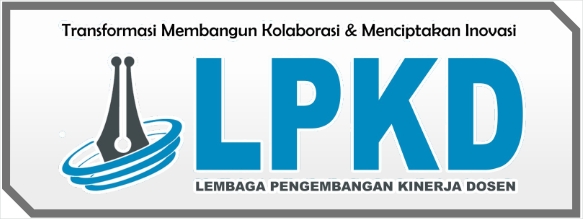Gambaran Karakteristik Nyeri Kronik Paska Operasi pada Pasien Rawat Jalan di Poli Bedah dan Poli Obstetri dan Ginekologidi RSU di Medan
DOI:
https://doi.org/10.57213/tjghpsr.v3i2.679Keywords:
Pain, Chronic-Pain, Post-SurgeryAbstract
Chronic pain is pain that persistent and will continue beyond the proper healing time, there are two time points used in daily practice, namely 3 months and 6 months after the first injury. Sensitivity of peripheral nociceptive neurons and central underlying the process of transition from acute pain to chronic pain. There are several factors that influence the increasing incidence of postoperative chronic pain including preoperative, intraoperative and postoperative factors. Untreated acute postoperative pain also increases the risk of increasing chronic postoperative pain. In Asia, the prevalence of chronic pain varies widely, between 7% in Malaysia to 60% in Cambodia. The prevalence of postoperative chronic pain in adults is reported to be around 20% in developed countries. The incidence includes all ages with a higher incidence in women and the elderly. The purpose of this study was to describe the characteristics of postoperative chronic pain in outpatients in the surgical polyclinic and obstetrics and gynecology polyclinic at RSU Medan. The type of research used in this study was Observational with a Cross Sectional method approach. Based on the research that has been done, it was found that ages 26-35 years experienced the most chronic pain, namely as much as 29.8% and women experienced more chronic pain compared to men. Based on this study it was found that the majority of respondents experienced moderate pain intensity as many as 36 respondents (63.2%). There were descriptions of characteristics that were mostly 26-35 years old.
References
(n.d.). Multimodal analgesia for acute pain: Assessing and managing acute pain – A call to action.
Alit, K., Wiguna, A., Ngurah, G., et al. (2021). Gambaran intensitas nyeri pasien pasca-operasi abdomen bawah di RSUP Sanglah. Medicina, 10(8). https://doi.org/10.24843.MU.2021.V10.i8.P17
Australian and New Zealand College of Anaesthetists and Faculty of Pain Medicine. (2017). Acute Pain Management: Scientific Evidence. https://www.tga.gov.au
Baker, R., Szabo, A., & Goldschneider, K. (2018). Chronic pain. In A Practice of Anesthesia for Infants and Children (pp. 1063–1075.e2). Elsevier. https://doi.org/10.1016/B978-0-323-42974-0.00045-8
Breivik, H., Borchgrevink, P. C., Allen, S. M., et al. (2018). Assessment of pain. British Journal of Anaesthesia, 101(1), 17–24. https://doi.org/10.1093/bja/aen103
Carley, M. E., Chaparro, L. E., Choinière, M., et al. (2021). Pharmacotherapy for the prevention of chronic pain after surgery in adults: An updated systematic review and meta-analysis. Anesthesiology, 135(2), 304–325. https://doi.org/10.1097/ALN.0000000000003837
Cohen, M., Quintner, J., & van Rysewyk, S. (2018). Reconsidering the International Association for the Study of Pain definition of pain. Pain Reports, 3(2). https://doi.org/10.1097/PR9.0000000000000634
Dwi Antari, E., Nafisah, U., Sulistyaningsih, W., et al. (2022). Penggunaan obat analgesik pada pasien pasca bedah caesar bangsal Annisa di RS PKU Muhammadiyah Surakarta. Jurnal Farmasi.
Glare, P., Aubrey, K. R., & Myles, P. S. (2019). Transition from acute to chronic pain after surgery. The Lancet, 393(10180), 1537–1546. https://doi.org/10.1016/S0140-6736(19)30352-6
Handayani, S., Arifin, H., & Manjas, M. (2019). Kajian penggunaan analgetik pada pasien pasca bedah fraktur di Trauma Center RSUP M. Djamil Padang. Jurnal Sains Farmasi & Klinis, 6(2), 113. https://doi.org/10.25077/jsfk.6.2.113-120.2019
Keidokteran Ibnu Nafis, J., Azzahra Lubis, K., & Frans Sitepu, J. (2020). Incidence of pain after obstetric surgery in the Delima General Hospital Medan in 2020.
Kyranou, M., & Puntillo, K. (2012). The transition from acute to chronic pain: Might intensive care unit patients be at risk? Annals of Intensive Care, 2(1). https://doi.org/10.1186/2110-5820-2-36
Lazaridou, A., Elbaridi, N., Edwards, R. R., & Bair, C. B. (2018). Pain assessment. In Essentials of Pain Medicine (pp. 39–46.e1). Elsevier. https://doi.org/10.1016/B978-0-323-40196-8.00005-X
Li, T., Liu, T., Chen, X., et al. (2020). Microglia induce the transformation of A1/A2 reactive astrocytes via the CXCR7/PI3K/Akt pathway in chronic post-surgical pain. Journal of Neuroinflammation, 17(1). https://doi.org/10.1186/s12974-020-01891-5
Linton, S. J., & Shaw, W. S. (2011). Impact of psychological factors in the experience of pain. Physical Therapy, 91(5), 700–711. https://academic.oup.com/ptj/article/91/5/700/2735743
Mailawati, T., & LRFA. (n.d.). Hubungan faktor sosiodemografi dengan angka kejadian nyeri kronik pada pasien pasca operasi bedah mayor di Rumah Sakit Dr. Saiful Anwar Malang.
Mailawati, T., & LRFA. (n.d.). Hubungan faktor sosiodemografi dengan angka kejadian nyeri kronik pada pasien pasca operasi bedah mayor.
McGregor, R. H., Warner, F. M., Linde, L. D., et al. (2022). Quality of meta-analyses of non-opioid, pharmacological, perioperative interventions for chronic postsurgical pain: A systematic review. Regional Anesthesia and Pain Medicine, 47(4), 263–269. https://doi.org/10.1136/rapm-2021-102981
Mills, S. E. E., Nicolson, K. P., & Smith, B. H. (2019). Chronic pain: A review of its epidemiology and associated factors in population-based studies. British Journal of Anaesthesia, 123(2), e273–e283. https://doi.org/10.1016/j.bja.2019.03.023
National Model EMS Clinical Guidelines Version 2.2. (2019). https://www.naemso.org
Ratna Juwita, D., Faradani, N., Novalisa, I., & Wibowo, A. (2019). Studi penggunaan obat analgesik pada pasien pasca partus pervaginal dan sectio caesarea di RSU Bunda Purwokerto [Drug utilization studies of analgesic for vaginal delivery and caesarean section patients at RSU Bunda Purwokerto], Vol. 16.
Rosenberger, D. C., & Pogatzki-Zahn, E. M. (2022). Chronic post-surgical pain – Update on incidence, risk factors, and preventive treatment options. BJA Education, 22(5), 190–196. https://doi.org/10.1016/j.bjae.2021.11.008
Schug, S. A., Lavand’Homme, P., Barke, A., Korwisi, B., Rief, W., & Treede, R. D. (2019). The IASP classification of chronic pain for ICD-11: Chronic postsurgical or posttraumatic pain. Pain, 160(1), 45–52. https://doi.org/10.1097/j.pain.0000000000001413
Smith, S., & Practice. (2018). Fundamentals of Nursing.
Tan, B. K., Smith, A. J., O’Sullivan, P. B., Chen, G., Burnett, A. F., & Briggs, A. M. (2014). Low back pain beliefs are associated with age, location of work, education and pain-related disability in Chinese healthcare professionals working in China: A cross-sectional survey. BMC Musculoskeletal Disorders, 15(1). https://doi.org/10.1186/1471-2474-15-255
Thapa, P., & Euasobhon, P. (2018). Chronic postsurgical pain: Current evidence for prevention and management. Korean Journal of Pain, 31(3), 155–173. https://doi.org/10.3344/kjp.2018.31.3.155
Thapa, P., & Euasobhon, P. (2018). Chronic postsurgical pain: Current evidence for prevention and management. Korean Journal of Pain, 31(3), 155–173. https://doi.org/10.3344/kjp.2018.31.3.155
Valadez, T. N., Norton, J. R., & Neary, M. C. (n.d.). The reaction of Cp*(Cl)M(Diene) (M = Ti, Hf) with isonitriles.
Voscopoulos, C., & Lema, M. (2010). When does acute pain become chronic? British Journal of Anaesthesia, 105(i69–i85). https://doi.org/10.1093/bja/aeq323
Zhao, Y., Liu, X. M., Zhang, L. Y., et al. (2023). Sex and age differences in chronic postoperative pain among patients undergoing thoracic surgery: A retrospective cohort study. Frontiers in Medicine (Lausanne), 10. https://doi.org/10.3389/fmed.2023.1180845
Downloads
Published
Issue
Section
License
Copyright (c) 2025 The Journal General Health and Pharmaceutical Sciences Research

This work is licensed under a Creative Commons Attribution-ShareAlike 4.0 International License.













